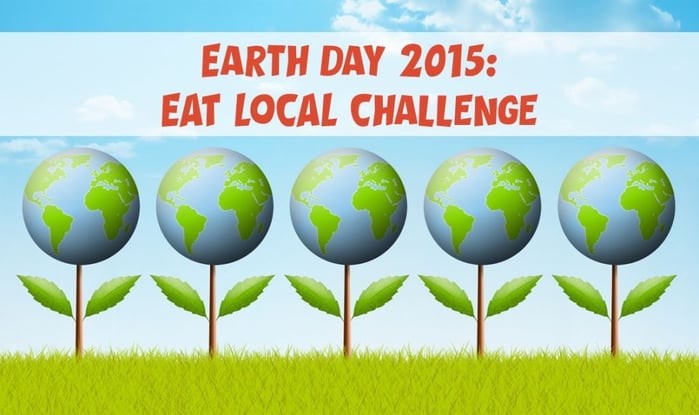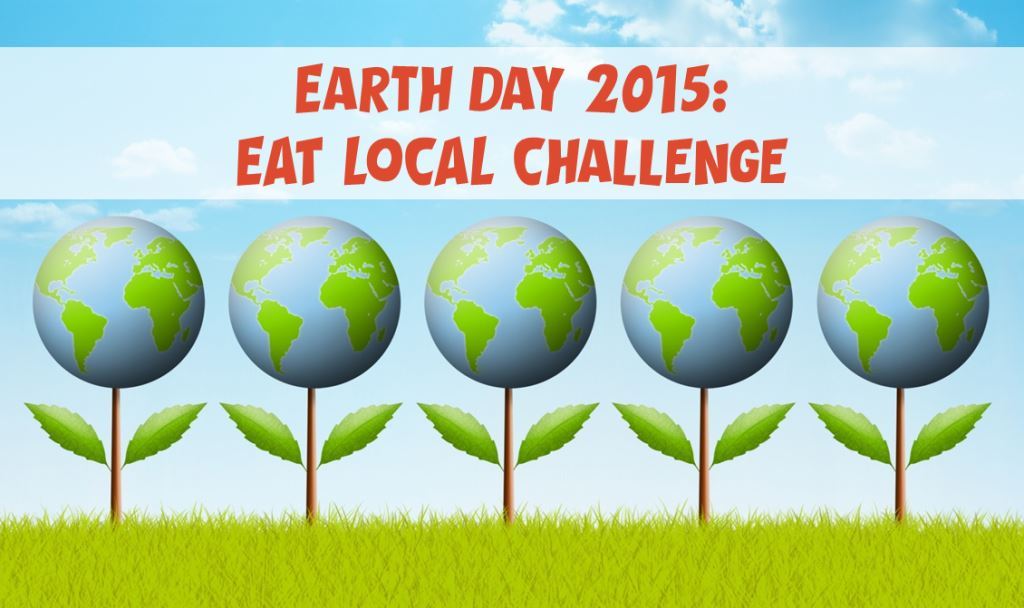Earlier this month we celebrated Earth Day’s 45th anniversary, an annual holiday established to bring attention to environmental protection. Although this post may be fashionably late, there is never a bad time to start working towards a cause as important as this.
In the words of my favorite president, Abraham Lincoln:
“You cannot escape the responsibility of tomorrow by evading it today.”

Here are five healthy food consumption habits you can start today to help preserve the environment:
1. Use a water filter and a reusable bottle instead of purchasing plastic bottles.
Water itself is an incredibly healthy and essential beverage, but making a switch in the container you drink it from can save a lot of waste. It is estimated that annually, Americans throw away enough plastic to wrap around the Earth four times and only about 25% of the plastic produced is recycled (NPS.gov). That is a lot of plastic resting in our landfills waiting about 1,000 years to degrade. If that isn’t reason enough to make the switch to a reusable bottle, think about how having a fun water bottle on your desk may motivate you to drink more H2O throughout the day.
Go even further by packing lunches in reusable containers like mason jars or Tupperware instead of plastic bags. Pack them in an insulated lunch box (or bag) and lose the paper bag to further reduce waste.
Potential savings (annual): 1.5 million tons of plastic waste, 47 million gallons of oil.1
2. Same goes for coffee! Take a coffee mug to your local brew shop instead of using their disposable cups.
Did you know that the 16 billion disposable paper cups used each year are not recyclable due to their waterproof lining?2 Carbonrally.com crunched the numbers to figure that by using just five fewer disposable coffee cups each week, you alone can reduce your CO2 emissions by 1.25 lbs. every week.
Often times, coffee shops will give discounts for using your own tumbler and skipping out on the paper cup.
Potential savings (annual): 6.5 million trees, 4 billion gallons of water, enough energy to power 54,000 homes per year.3 Plus, a few cents per cup.
3. Think global, eat local! A major way to reduce your carbon footprint is to buy seasonal local food.
Buying fruits that are out of season in your area means they have to travel quite a ways to get to you. A study by Iowa State University (pdf) found that your typical carrot has to travel about 1,838 miles to your dinner plate, a strawberry has to go 1,830 miles, and spinach has to travel 1,815 miles just to be a part of your salad. That’s a lot of time for the quality and nutritional value of your produce, fresh herbs, and baked goods to deteriorate.
eLocal has put together a great infographic on buying locally that includes economic and environmental impacts of food transportation and production. Local community supported agriculture groups (CSAs) are a great place to start. Find one here at LocalHarvest.org.
Potential savings: Reduce fuel usage and CO2 emissions by a factor of 4 to 17. One study equated the reduction in transport-related CO2 emissions to taking 16,191 cars off the road.4
4. Purchase less processed, less packaged foods.
It burns more resources processing foods than it does cooking at home with fresh, simple ingredients . . . not to mention this a great way to avoid sodium, additives, and preservatives as well. Also, avoiding packaging reduces waste. Instead of buying individual cups of yogurt, try buying the larger, more cost-efficient tub and filling your own reusable containers. This makes it easier to top the yogurt with your own fresh fruit, nuts, seeds, or granola as well.
Potential impact: In addition to the methane gas created by food waste in landfills, 13% of greenhouse gases in the U.S. are associated with the growing, manufacturing, transporting and disposing of food.5 By reducing food waste and reliance on processed, packaged foods, we can put a dent in these negative environmental impacts.
5. Embrace Meatless Mondays.
Potential impact:
• Reduce the approximately 1,850 gallons of water needed to produce a single pound of beef.6
• Reduce greenhouse gases (beef produces 30 kg of greenhouse gas per kg of food, versus 0.42-1.3 kg of greenhouse gas per kg of food in carrots, potatoes and rice).7
• Reduce fossil fuel energy (1 kilocalorie of meat based protein requires 25 kilocalories of fossil fuel energy, while 1 kilocalories of grain based protein equivalent requires only 2.2 kilocalories of fossil fuel input).8
Are you up to the challenge? Earth Day may have passed, but don’t wait until next year to think about the environmental impacts of your food consumption. Let me know what healthy and environmental habits you have established in your daily routine!
Bring the taste of local food to your table tonight:
Read more about Earth Day and eating local:
- Earth Day Turns 44! Honor it With 365 of Green Business Practices
- How to Live a Farm to Table Lifestyle Without a Farm
- 3 Reasons Why You Should Know Where Your Food Comes From
- Celebrate Farms to School Month by Supporting Local Farms & Food
Sources:
4 DeWeerdt, S. Is local food better? World Watch Magazine, 2011, v22 (3), referencing first research from Rich Pirog of Iowa State University’s Leopold Center for Sustainable Agriculture, and second, an unnamed Canadian study from Waterloo, Ontario.
5 United States Environmental Protection Agency. Report: Opportunities to reduce greenhouse gas emissions through materials and land management practices, 2009. Available here (pdf), cited by EPA.gov’s Food Recovery Hierarchy.
6 Mekonnen, M.M. and Hoekstra, A.Y. (2010) The green, blue and grey water footprint of farm animals and animal products, Value of Water Research Report Series No. 48, UNESCO-IHE, Delft, the Netherlands. Via MeatlessMonday.com.
7 Carlsson-Kanyama A, Gonzalez A. Potential contributions of food consumption patterns to climate change. 1-4 Journal of Clinical Nutrition 2009; 89 (suppl): 1704S–9S. Via MeatlessMonday.com.
8 Pimentel D, Pimental M. Food, Energy and Society, Third Edition. CRC Press 2007, pages 67-75. Via MeatlessMonday.com.





